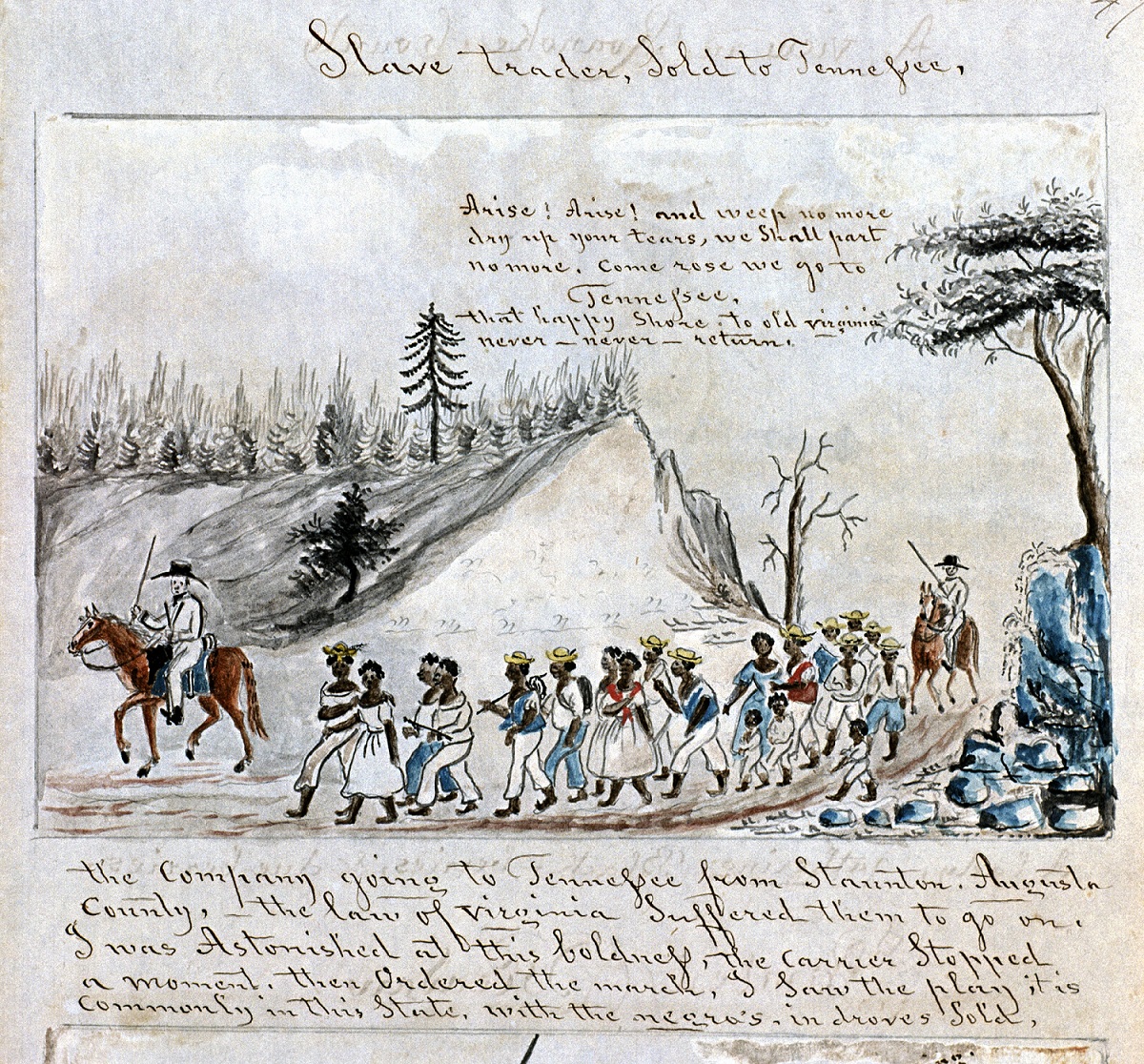Background
The U.S. government ended the international slave trade in 1808, but slavery was still the foundation of the U.S. economy. The Louisiana Purchase and the acquisition of Florida added thousands of miles of land that white planters wished to turn into profitable cotton plantations. And they wanted enslaved people to do the hard labor.
Around the same time, enslavers along the East Coast were running out of land for their enslaved people to work. They began to sell their surplus enslaved people to enslavers in the South and West. This internal slave trading replaced the international slave trade and became a cornerstone of the new nation’s economy.
Historians estimate that about one million enslaved people were sold and moved around the country between 1808 and the abolition of slavery in 1865. This internal movement of enslaved people is called the Second Middle Passage. The sale and relocation of enslaved people were decided according to the wants and needs of enslavers, not the enslaved. About one-third of all marriages between enslaved people were broken up by these forced relocations. About one-fifth of enslaved children were separated from their parents. The trauma of these forced separations was devastating for the people who suffered through them.
About the Image
This is an illustration of recently sold enslaved people being marched from Virginia to Tennessee. The men, women, and children were often chained or tied together to discourage escape attempts. A group of enslaved people being moved in this way was called a coffle.
Enslaved women had a lot of value in the national slave trade. Their ability to give birth meant they could create more enslaved people for their enslavers. Women faced the constant threat of sexual exploitation on the long journeys to their new enslavers.
Vocabulary
- Louisiana Purchase: The treaty signed by Thomas Jefferson that acquired the Louisiana Territory from France in 1803.
- Second Middle Passage: The forced sale and migration of enslaved people within the United States after the international slave trade ended in 1808.
- coffle: A group of enslaved people bound together and being moved for the purposes of sale.
Discussion Questions
- What does this image reveal about the national slave trade in the early United States?
- How do you think the enslaved people felt about their forced journey to a new enslaver?
- Why is it important to acknowledge the history of the national slave trade? What impact did the Second Middle Passage have on Black communities in the United States?
Suggested Activities
- APUSH Connection: 4.3 Politics and Regional Interests
- For a larger lesson about the national slave trade and its impacts on enslaved people, teach this image together with the following: Life Story: Sukey, Life Story: Sojourner Truth, Life Story: Harriet Tubman, Information Wanted, and Life Story: Matilda Hughes.
- To learn more about how enslaved women resisted slavery in the United States, see: Life Story: Oney Judge, Maroons in the Great Dismal Swamp, and Resistance.
- Combine this resource with the following for a lesson on the impacts of early U.S. expansion on communities of color: Washington’s Captives, The First Seminole War, The Battle of Fort Dearborn, and Life Story: Lydia Carter.
Themes
WORK, LABOR, AND ECONOMY







